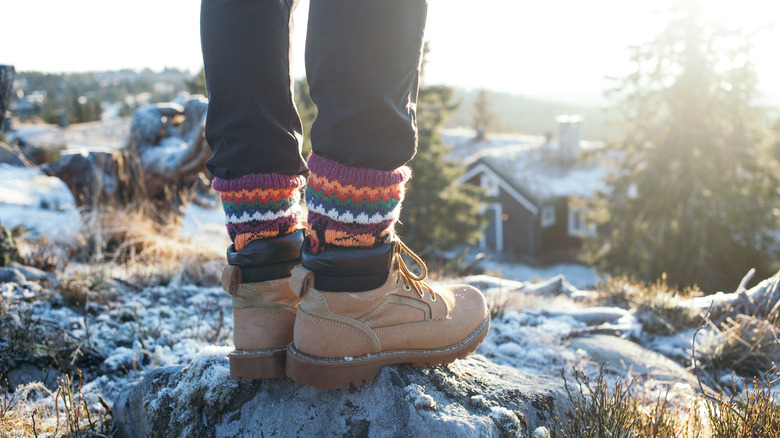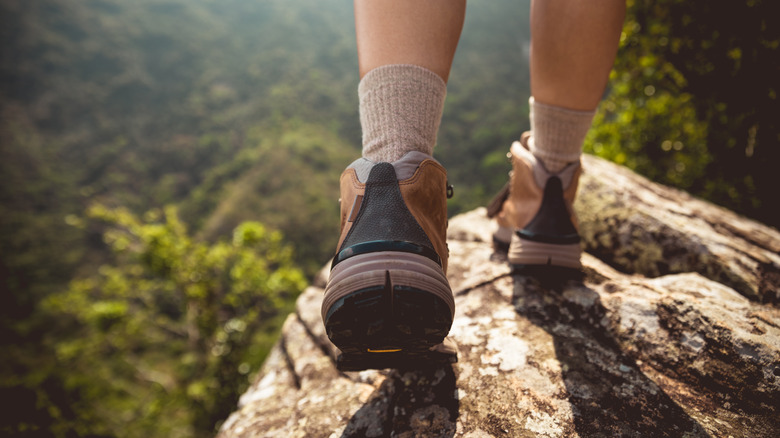Why You Should Never Wear Cotton Socks When Hiking
While hiking, especially over long distances, the most important part of your body to keep comfortable is your feet. Painful feet covered in blisters can quickly take a hike from an enjoyable experience to pure misery — one simple mistake that many new hikers make that causes their feet to end up sore and uncomfortable is wearing cotton socks. While cotton is one of the most common materials used to make socks, the reason you should never wear them while hiking is that cotton often holds moisture and tends to stay wetter for longer when compared to other materials, both natural and synthetic.
During a short hike, wet socks may not make too much of a difference. However, during long, strenuous hikes, they can have a large impact. This is because wet socks not only help bacteria grow causing your feet and shoes to smell, but they also create a perfect environment for blisters. According to the American Hiking Society, the reason this happens is that wet socks create more friction between your foot and the shoe, and more friction means more blisters. So, if cotton socks aren't the best option, what material should you choose for your next hike?
Best materials for hiking socks
The best materials for hiking socks are typically wool, nylon, and polyester. Nowadays, many hikers have turned to wool socks because the natural fiber is more odor-resistant and easily wicks away moisture. Because traditional wool is itchy and uncomfortable, most hiking socks sold today are a blend of soft merino wool and synthetic materials (often nylon). The combination of wool and synthetic fibers helps create socks that not only wick moisture but dry quickly and are durable.
The only problem with merino wool mixed fiber socks is that they can be quite expensive. In fact, one pair of wool hiking socks from a popular brand like Darn Tough or SmartWool can run you around $20 to $25. If you are looking for a more affordable hiking sock, you can opt for polyester — a synthetic material that is often mixed with nylon to create a fast-drying and durable hiking sock. The disadvantage of socks that are primarily made from polyester is that they hold onto smells more than other materials and are made from petroleum, meaning that they aren't very sustainable.
What socks to buy if you are just getting started
If you are a new hiker, starting with a nice pair of long polyester blend socks is a great option. This is because, although wool is a popular hiking sock material, it's not the only material that works. Plus, if you are new to hiking and trekking, you may not want to invest in multiple pairs of expensive wool-blend socks. Polyester socks are much more affordable and also perform better than cotton-blend socks.
If you decide to go on longer hikes more often, then you can consider investing in a few pairs of merino wool socks. Nowadays, many experienced hikers wear two pairs of socks, the outer one made of wool and the inner one made of a synthetic material like nylon. This is done because nylon socks are great at moisture-wicking and are comfortable to wear next to the skin while wool socks absorb moisture and keep it away from your feet.


